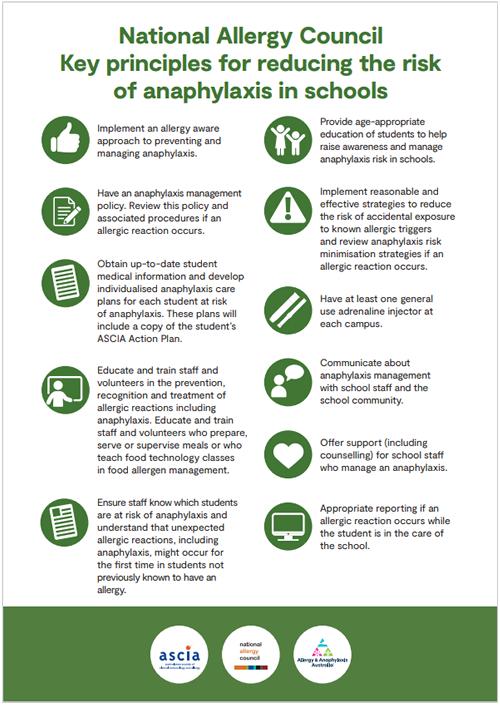Key principles for managing anaphylaxis risk in schools
Implement an Allergy Aware approach to preventing and managing anaphylaxis.
Have an anaphylaxis management policy. Review this policy and associated procedures if an allergic reaction occurs.
Obtain up-to-date student medical information and develop individualised anaphylaxis care plans for each student at risk of anaphylaxis. These plans will include the student’s ASCIA Action Plan.
Educate and train staff and volunteers in the prevention, recognition and treatment of allergic reactions including anaphylaxis. Educate and train staff and volunteers who prepare, serve or supervise meals or who teach food technology classes in food allergen management.
Ensure staff know which students are at risk of allergic reactions. Be aware that unexpected allergic reactions, including anaphylaxis, might occur for the first time in individuals not previously known to have allergy.
Provide age-appropriate education of students to help raise awareness and manage anaphylaxis risk in schools.
Implement reasonable and effective strategies to reduce the risk of accidental exposure to known allergic triggers and review anaphylaxis risk minimisation strategies if an allergic reaction occurs.
Have at least one general use adrenaline injector at each campus.
Communicate about anaphylaxis management with school staff and the school community.
Offer support (including counselling) for school staff who manage an anaphylaxis, and for the student who experienced the anaphylaxis and any witnesses.
Appropriate reporting if an allergic reaction occurs while the student is in the care of the school.

Content updated March 2024